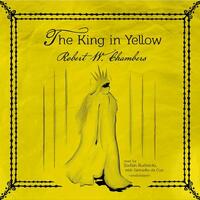Take a photo of a barcode or cover
dark
mysterious
slow-paced
Plot or Character Driven:
A mix
Strong character development:
Complicated
Loveable characters:
No
Diverse cast of characters:
No
Flaws of characters a main focus:
Yes
Really enjoyed these stories.
I hadn't realised it was really just a collection of isolated stories and, as I read, was anticipating the loose connections between them to tighten and clarify a broader narrative. Consider me confused as they became less fantastical/horrific and more conventional/romantic. Especially as the stories seemed to echo throughout one another with shared names and images.
It's hard to say whether expecting those connections soured or improved my reading experience, but it did suffuse the realistic stories with an air of mystery and enchantment which probably wouldn't have been felt otherwise. e.g. figures in the fog during The Street of the First Shell or the clandestine meetings of Clifford's set in The Street of Our Lady of the Fields.
I hadn't realised it was really just a collection of isolated stories and, as I read, was anticipating the loose connections between them to tighten and clarify a broader narrative. Consider me confused as they became less fantastical/horrific and more conventional/romantic. Especially as the stories seemed to echo throughout one another with shared names and images.
It's hard to say whether expecting those connections soured or improved my reading experience, but it did suffuse the realistic stories with an air of mystery and enchantment which probably wouldn't have been felt otherwise. e.g. figures in the fog during The Street of the First Shell or the clandestine meetings of Clifford's set in The Street of Our Lady of the Fields.
adventurous
challenging
dark
sad
medium-paced
I really liked the first five stories but the back five were meh
Despite picking this book up on a whim, I was pleasantly surprised by this absolutely fantastic/fascinating collection of short stories that are all connected by the mysterious/menacing in-book play 'The King in Yellow'.
'The Repairer of Reputations' [1]:
An engaging story with an element of mystery as we follow a narrator who has recently been released from an asylum after sustaining a head injury, as he makes arcane plans for himself and those around him. (TW: mental illness, suicide & animal death)
(4.5 stars)
'The Mask' [2]:
Both tragic and sweetly beautiful, this story is one of friendship, love & lost as the characters deal with the experimentation and consequences of an alchemical solution that can turn living beings into marble sculptures. Set years before the first story of the collection, it follows a group of friends, one of whom was briefly referenced in 'TRoR'. TW: suicide. (TW: animal experimentation & suicide)
(5 stars)
'In the Court of the Dragon' [3]:
An erie and suspenseful build-up with an ending that leaves the reader questioning the narrator's experiences throughout the story. Was it all a dream that he had after falling asleep in the church? Was this actually a supernatural experience as a result of the play? Or has reading 'The King in Yellow' merely driven him mad as it is wont to do?
(4.5 stars)
'The Yellow Sign' [4]:
This is a fantastic late C19th example of horror/weird fiction. It is an amazing read from the developing relationship between the artist narrator and his lovely model to the uncanny watchman and, of course, the haunting presence of 'The Yellow King'.
Just as the first and second stories are linked by a reference to sculptor Boris Yvain and his Fates (not only by the mysterious and dangerous play), this story is likewise connected to the first story as the narrator is apparently an acquaintance of Castaigne and has some knowledge of the events that had previously unfolded.
(5 stars)
Overall, I thoroughly enjoyed this collection and hope to somehow continue with the remaining five short stories (despite their not being included in this particular edition).
'The Repairer of Reputations' [1]:
An engaging story with an element of mystery as we follow a narrator who has recently been released from an asylum after sustaining a head injury, as he makes arcane plans for himself and those around him. (TW: mental illness, suicide & animal death)
(4.5 stars)
'The Mask' [2]:
Both tragic and sweetly beautiful, this story is one of friendship, love & lost as the characters deal with the experimentation and consequences of an alchemical solution that can turn living beings into marble sculptures. Set years before the first story of the collection, it follows a group of friends, one of whom was briefly referenced in 'TRoR'. TW: suicide. (TW: animal experimentation & suicide)
(5 stars)
'In the Court of the Dragon' [3]:
An erie and suspenseful build-up with an ending that leaves the reader questioning the narrator's experiences throughout the story. Was it all a dream that he had after falling asleep in the church? Was this actually a supernatural experience as a result of the play? Or has reading 'The King in Yellow' merely driven him mad as it is wont to do?
(4.5 stars)
'The Yellow Sign' [4]:
This is a fantastic late C19th example of horror/weird fiction. It is an amazing read from the developing relationship between the artist narrator and his lovely model to the uncanny watchman and, of course, the haunting presence of 'The Yellow King'.
Just as the first and second stories are linked by a reference to sculptor Boris Yvain and his Fates (not only by the mysterious and dangerous play), this story is likewise connected to the first story as the narrator is apparently an acquaintance of Castaigne and has some knowledge of the events that had previously unfolded.
(5 stars)
Overall, I thoroughly enjoyed this collection and hope to somehow continue with the remaining five short stories (despite their not being included in this particular edition).
If you're looking to dig in to the background of weird fiction or cosmic horror, then this is essential reading. However, not all of the stories deal with that, and to be fair Chambers was as adept at romance and historical fiction as horror, and far more successful at them.
Slightly difficult to rate this one, as only the first half deals with the King in Yellow, a play reputed to drive people mad that's sprinkled among the stories. The second half of stories don't have that scaffolding, though they are well written (and I enjoyed The Demoiselle d'Ys the most, possibly because it's closer to the horror genre than romance or historical fiction).
So it's a 3.5 from me but I'll round up to 4 because it's better than a 3. I would happily reread the King in Yellow stories but nothing beyond the unrelated Demoiselle d'Ys.
Slightly difficult to rate this one, as only the first half deals with the King in Yellow, a play reputed to drive people mad that's sprinkled among the stories. The second half of stories don't have that scaffolding, though they are well written (and I enjoyed The Demoiselle d'Ys the most, possibly because it's closer to the horror genre than romance or historical fiction).
So it's a 3.5 from me but I'll round up to 4 because it's better than a 3. I would happily reread the King in Yellow stories but nothing beyond the unrelated Demoiselle d'Ys.
A lovely collection of macabre short stories that for reasons unbeknownst to me segue into nice, romantic and even comical ones. I thought it was a form-follows-content thing wherein the actual book follows the structure of the fictional play "The King in Yellow" where it starts out normally enough and its second act drives you mad. Did Chambers intend for the shift in tones to be so disorienting for readers they would think themselves under the spell of "The King in Yellow" just like the characters they were reading about? Or did writers just give less of a fuck in the late 19th century? I'm willing to go for the latter!
I will say though that when it comes to weird fiction, Chambers has Lovecraft beat because of the simple reason he seems to know what humans speak like on the most basic level. He knows that men and women exist and sometimes they like each other. He knows that jokes can undercut tension and that humans sometimes make them. All concepts far out of Lovecraft's grasp!
I will say though that when it comes to weird fiction, Chambers has Lovecraft beat because of the simple reason he seems to know what humans speak like on the most basic level. He knows that men and women exist and sometimes they like each other. He knows that jokes can undercut tension and that humans sometimes make them. All concepts far out of Lovecraft's grasp!
dark
mysterious
medium-paced
Plot or Character Driven:
A mix
Strong character development:
N/A
Loveable characters:
No
Diverse cast of characters:
No
Flaws of characters a main focus:
Yes
I would give this a higher score if all of the stories had been as dark and mysterious as the first three! Those ones were fun. The rest were a little lackluster.
dark
emotional
mysterious
medium-paced
Plot or Character Driven:
A mix
Strong character development:
No
Loveable characters:
No
Diverse cast of characters:
No
Flaws of characters a main focus:
Complicated
dark
mysterious
tense
fast-paced
Plot or Character Driven:
Character
Strong character development:
Yes
Loveable characters:
Yes
Diverse cast of characters:
No
Flaws of characters a main focus:
Yes
first four chapters are some genius storytelling, one of my favorite lines was something about "screaming in horror, or maybe it was joy" (can't remember exactly as I've recently gone insane due to unrelated circumstances) but the second half of the book just turns into disconnected paris romances?? Maybe the real existential horror was supposed to be the french women all along





